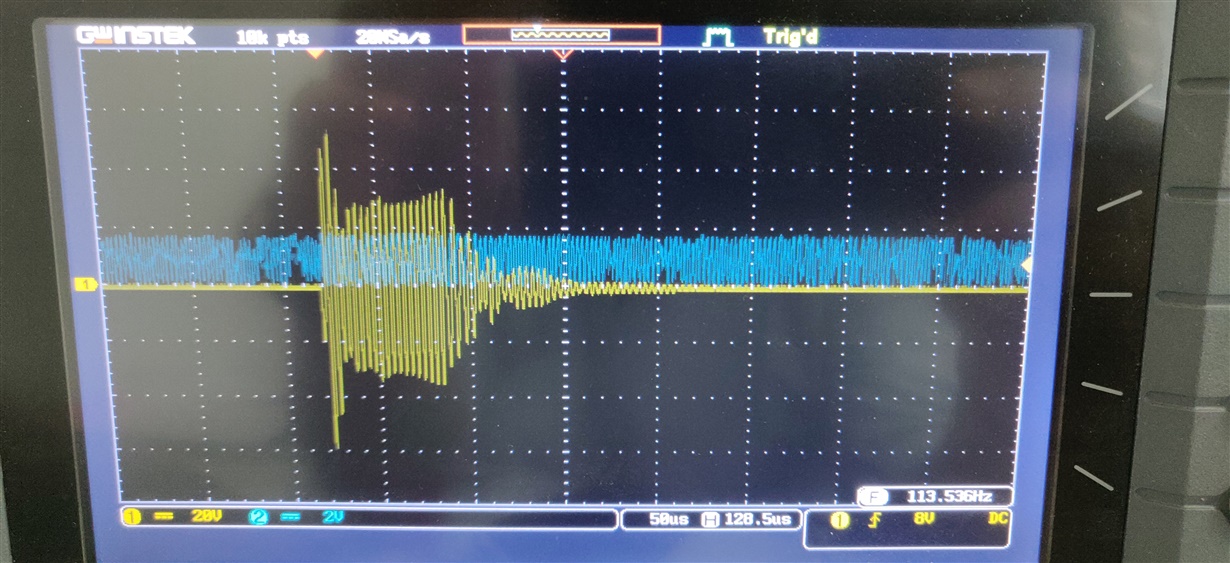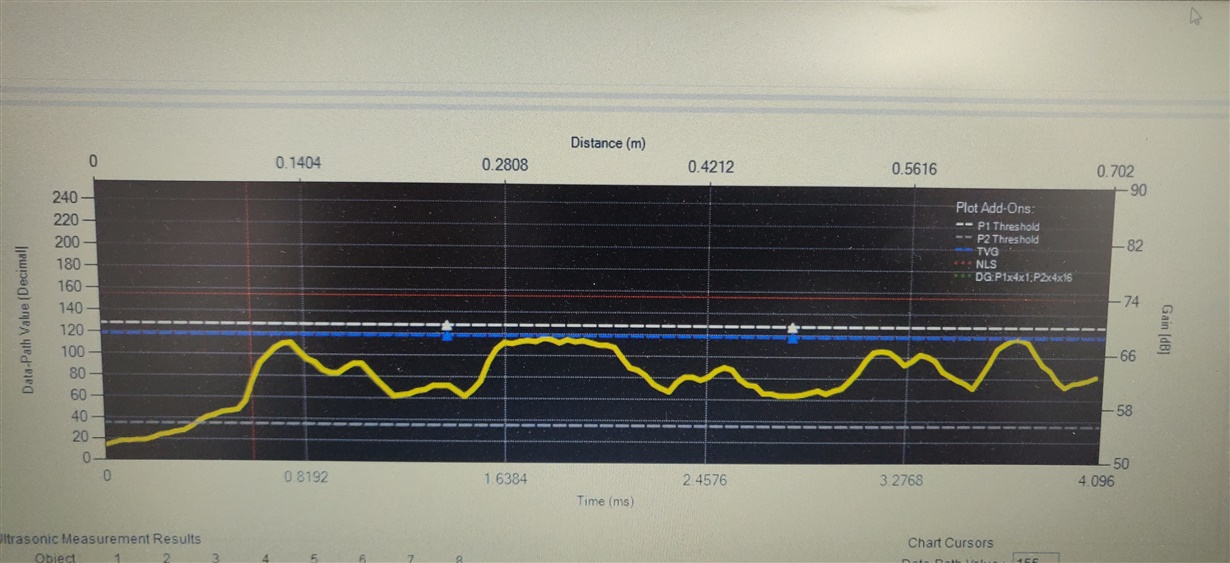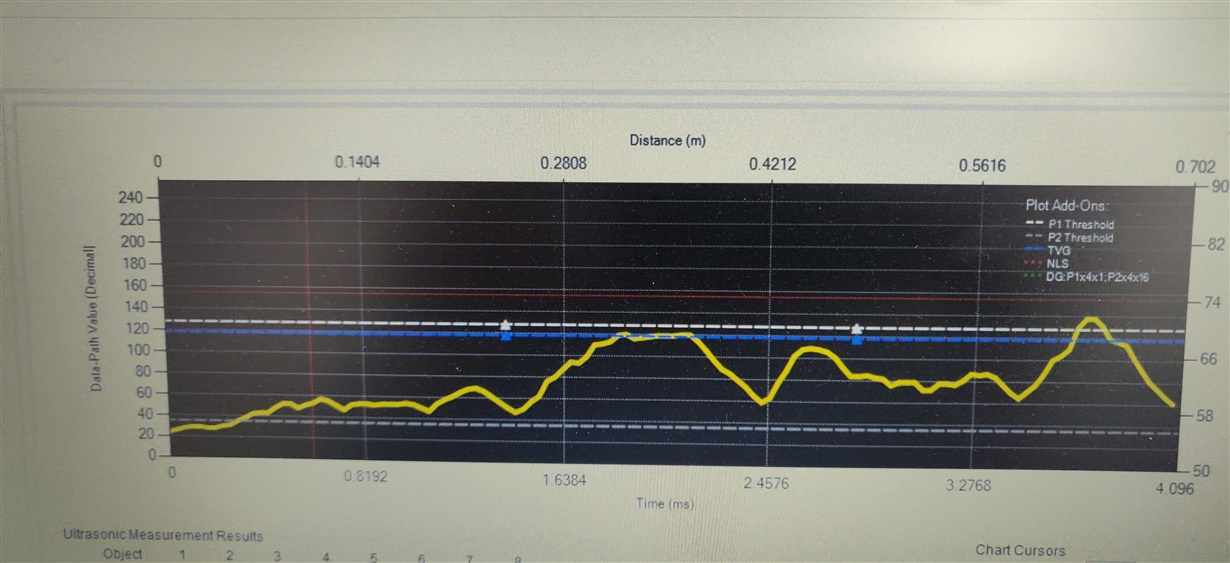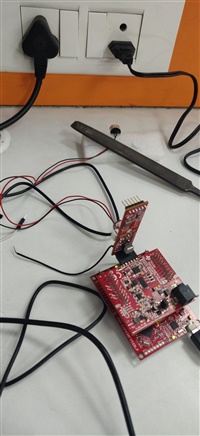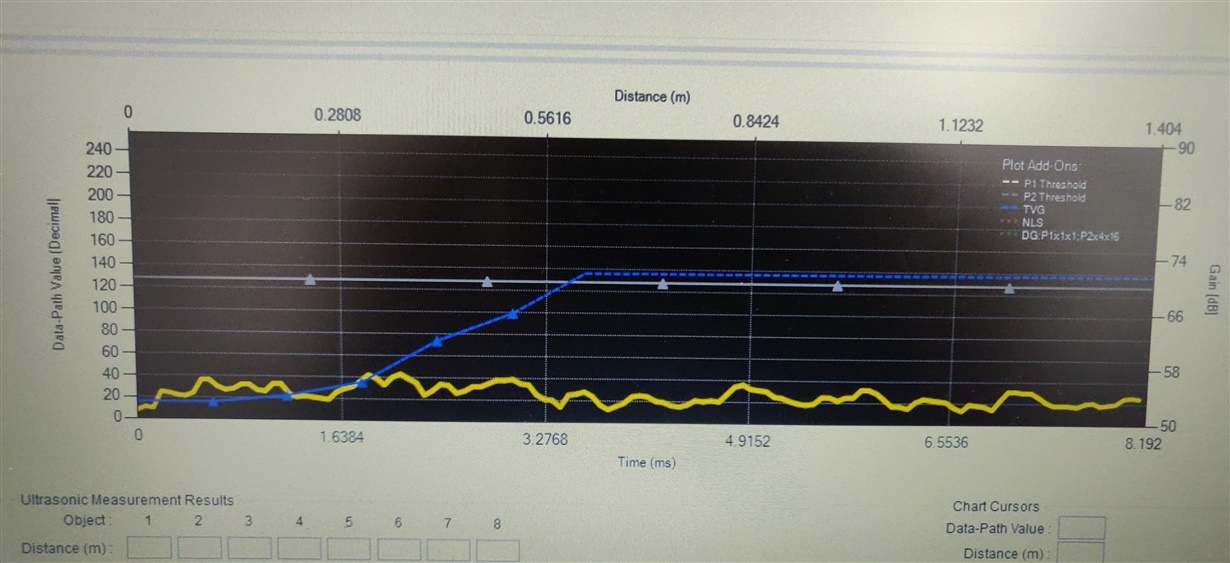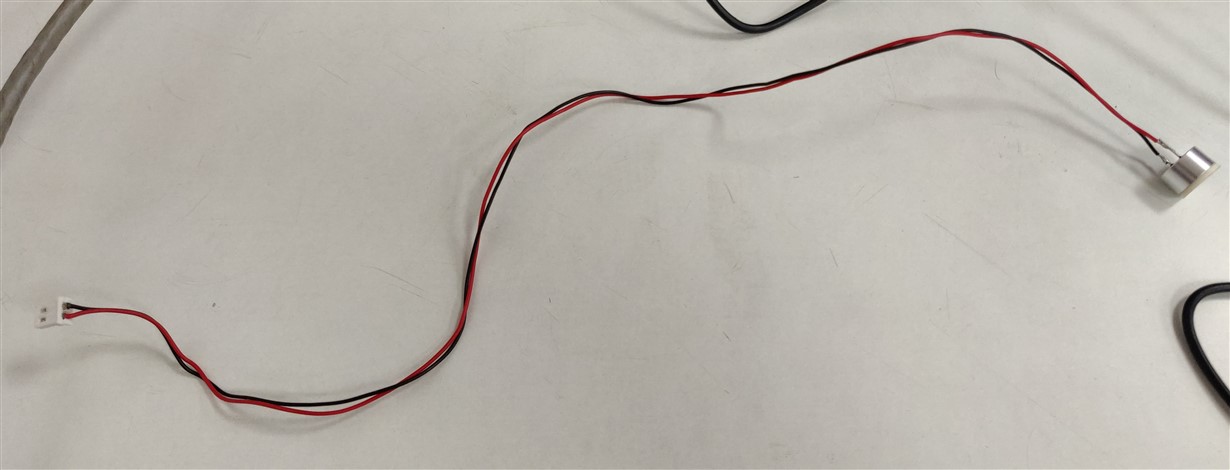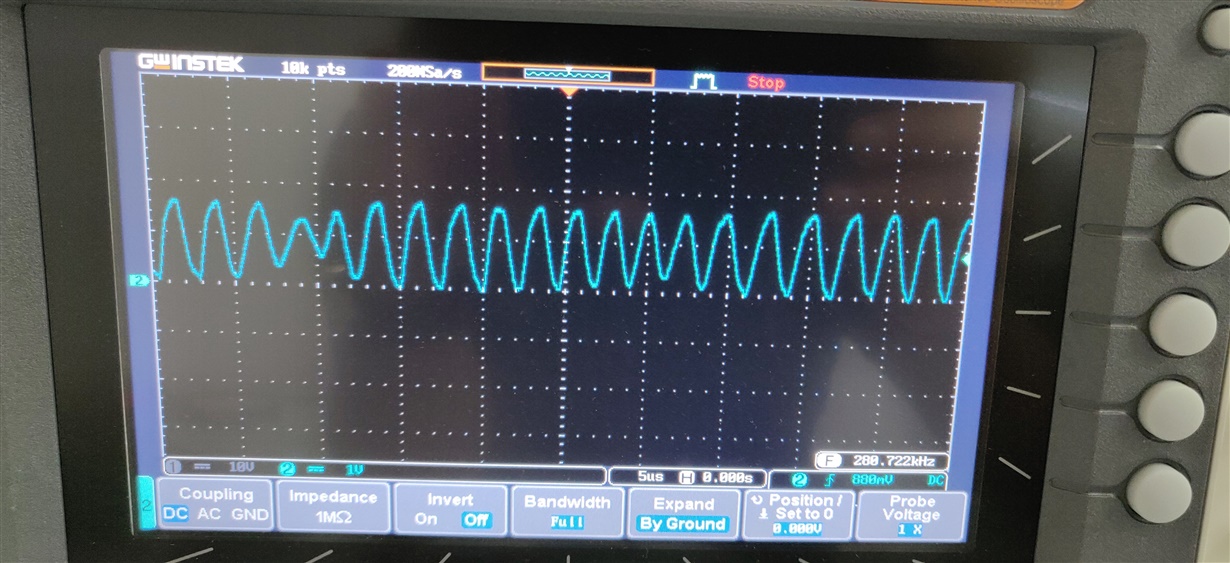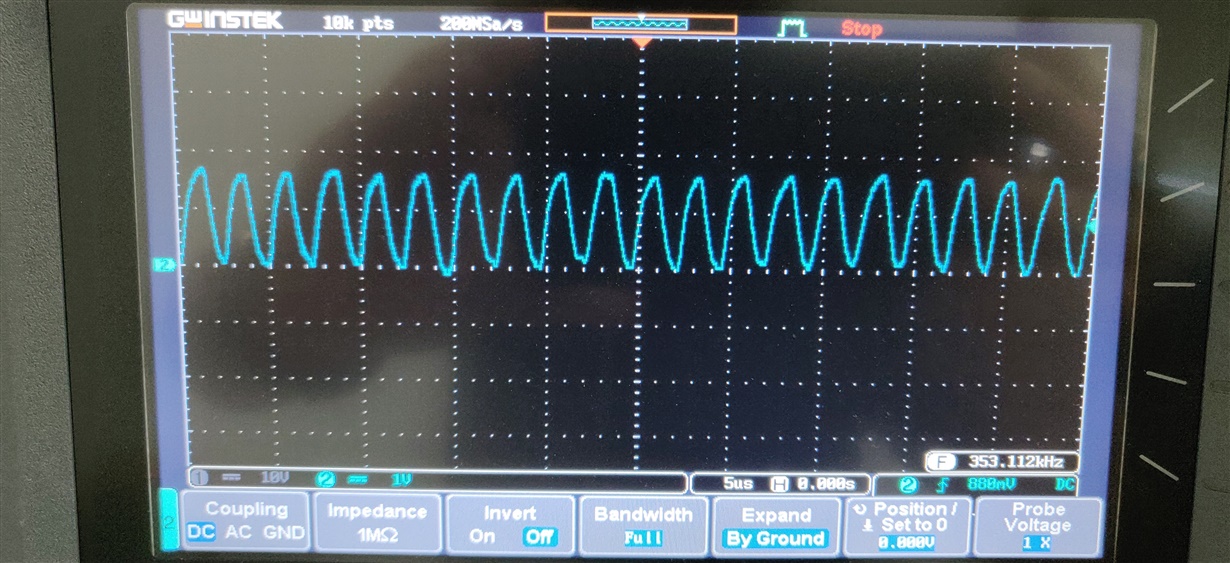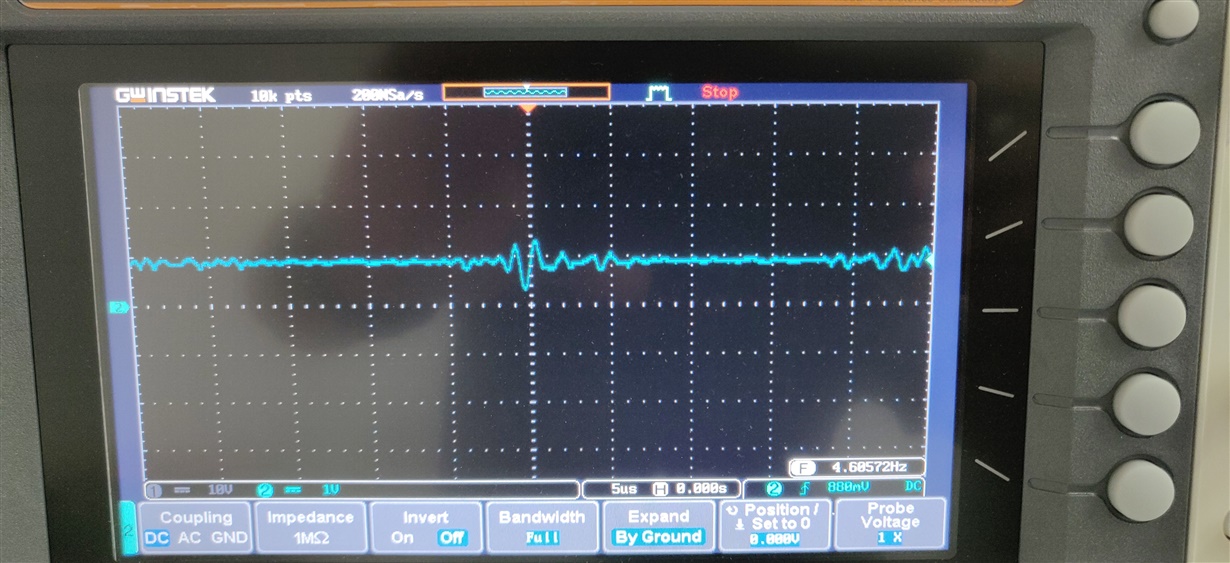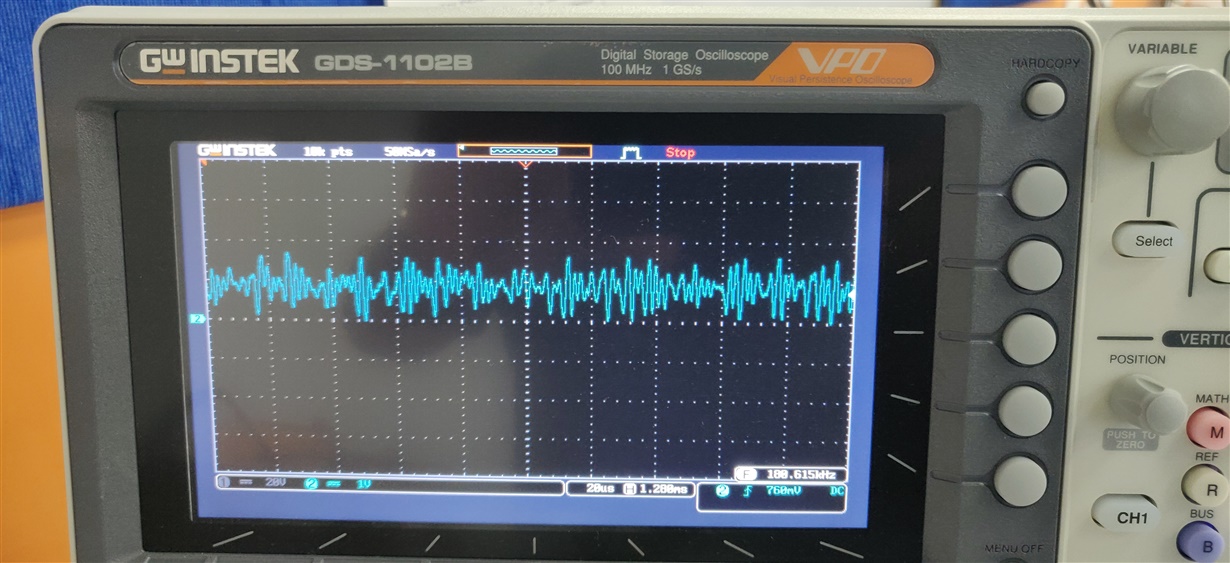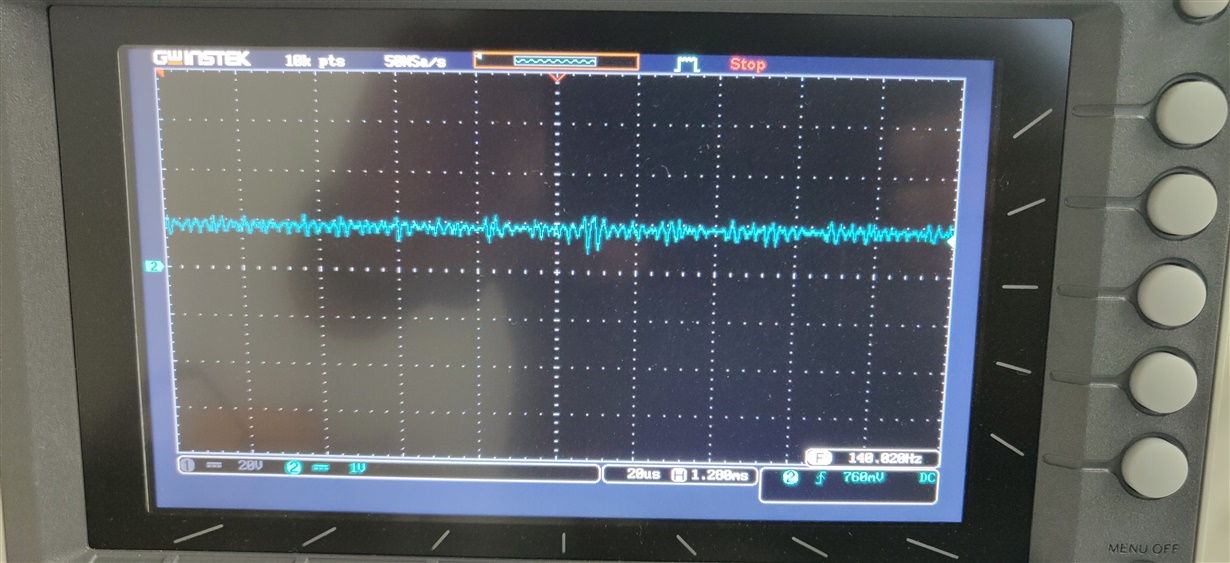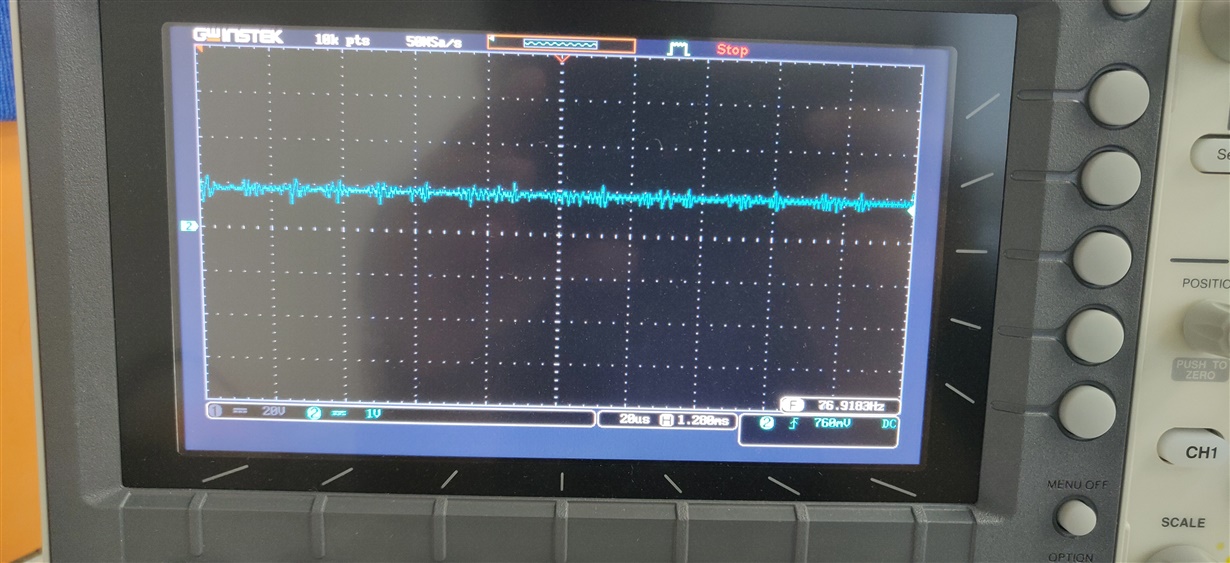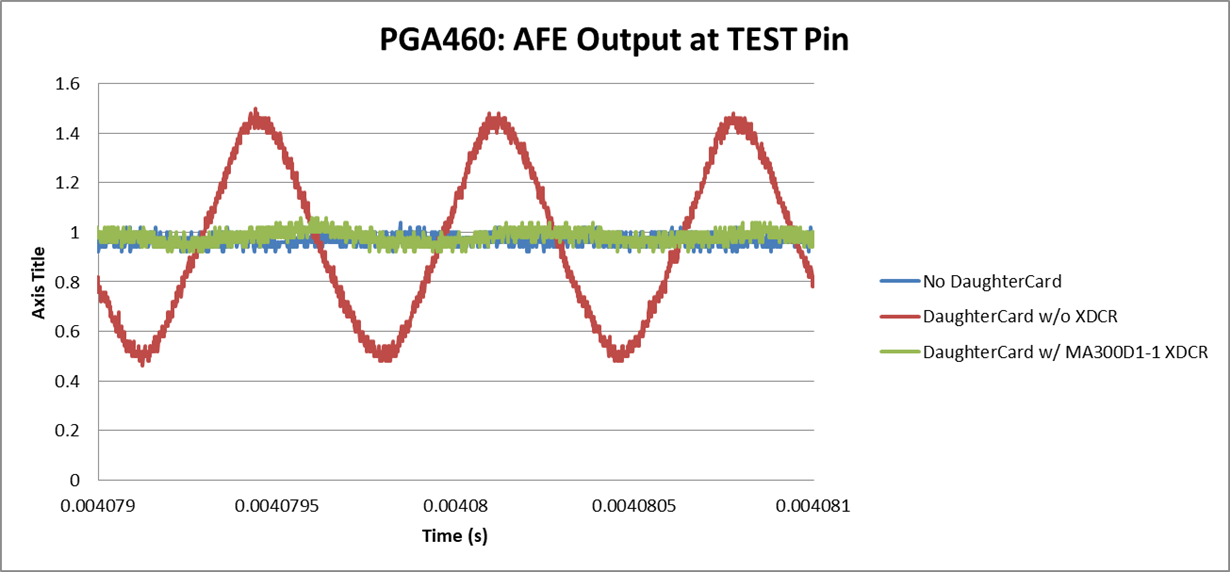Other Parts Discussed in Thread: BOOSTXL-PGA460, PGA460
Hi,
I am using BOOSTXL-PGA460 EVM for my project. I tested the EVM with the shipped transducer Murata MA58MF14-7N and it was working perfectly for distance measurement above 25cm. As my application demands object sensing in the range of 10cm- 30cm I switched to high frequency transducer of 300KHz. I even replaced the transformer on the EVM as per suggested transducer and transformer combinations on ti forum. Currently I am using Multicomp MCUSD13A300B09RS transducer and TDK/EPCOS B78416A2386A003 transformer but i am not able to get significant echo data dump. I am using the EVM in transformer driven bi-static mode.
The GUI Echo data dump capture image is shown below:
As you can see from the image that there is not even initial burst saturation on EDD.
The DSO captures of PGA signal is attached below:
In the above picture yellow channel is transducer input and blue channel is signal on test pin which is muxed as Analog Front End output.
Please find attached herewith my configuration file also.
;GRID_USER_MEMSPACE 00 (USER_DATA1),00 01 (USER_DATA2),00 02 (USER_DATA3),00 03 (USER_DATA4),00 04 (USER_DATA5),00 05 (USER_DATA6),00 06 (USER_DATA7),00 07 (USER_DATA8),00 08 (USER_DATA9),00 09 (USER_DATA10),00 0A (USER_DATA11),00 0B (USER_DATA12),00 0C (USER_DATA13),00 0D (USER_DATA14),00 0E (USER_DATA15),00 0F (USER_DATA16),00 10 (USER_DATA17),00 11 (USER_DATA18),00 12 (USER_DATA19),00 13 (USER_DATA20),00 14 (TVGAIN0),44 15 (TVGAIN1),44 16 (TVGAIN2),44 17 (TVGAIN3),08 18 (TVGAIN4),64 19 (TVGAIN5),9A 1A (TVGAIN6),99 1B (INIT_GAIN),40 1C (FREQUENCY),64 1D (DEADTIME),10 1E (PULSE_P1),0A 1F (PULSE_P2),14 20 (CURR_LIM_P1),3F 21 (CURR_LIM_P2),7F 22 (REC_LENGTH),07 23 (FREQ_DIAG),10 24 (SAT_FDIAG_TH),EE 25 (FVOLT_DEC),7C 26 (DECPL_TEMP),0F 27 (DSP_SCALE),00 28 (TEMP_TRIM),00 29 (P1_GAIN_CTRL),00 2A (P2_GAIN_CTRL),22 2B (EE_CRC),1F 40 (EE_CNTRL),00 41 (BPF_A2_MSB),57 42 (BPF_A2_LSB),F9 43 (BPF_A3_MSB),F9 44 (BPF_A3_LSB),A5 45 (BPF_B1_MSB),03 46 (BPF_B1_LSB),2D 47 (LPF_A2_MSB),7E 48 (LPF_A2_LSB),67 49 (LPF_B1_MSB),00 4A (LPF_B1_LSB),CD 4B (TEST_MUX),20 4C (DEV_STAT0),80 4D (DEV_STAT1),00 5F (P1_THR_0),44 60 (P1_THR_1),44 61 (P1_THR_2),44 62 (P1_THR_3),44 63 (P1_THR_4),55 64 (P1_THR_5),55 65 (P1_THR_6),9C 66 (P1_THR_7),D0 67 (P1_THR_8),72 68 (P1_THR_9),10 69 (P1_THR_10),63 6A (P1_THR_11),28 6B (P1_THR_12),30 6C (P1_THR_13),34 6D (P1_THR_14),3C 6E (P1_THR_15),00 6F (P2_THR_0),FE 70 (P2_THR_1),40 71 (P2_THR_2),4A 72 (P2_THR_3),FD 73 (P2_THR_4),38 74 (P2_THR_5),E2 75 (P2_THR_6),63 76 (P2_THR_7),7F 77 (P2_THR_8),56 78 (P2_THR_9),69 79 (P2_THR_10),40 7A (P2_THR_11),A3 7B (P2_THR_12),CF 7C (P2_THR_13),90 7D (P2_THR_14),59 7E (P2_THR_15),C3 7F (THR_CRC),CC EOF
Kindly help me in resolving this issue.
Thanks
Nishant Sharma




